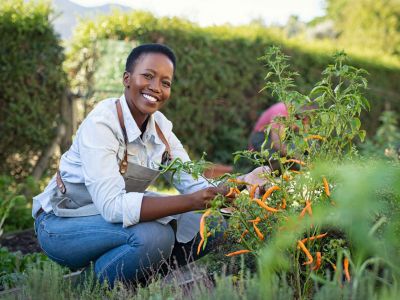Planting a Victory Garden also boosted morale by providing a way for folks at home to do their part in the war effort.
Victory Gardens Today
Also known as war gardens or food gardens for defense, Victory Gardens were grown in nearly every spare patch of land in private gardens, public lands, parks, playgrounds, and churchyards. Even window boxes and front-step containers became useful Victory Gardens. Victory Gardens today are still important in countless ways. They stretch the food budget, provide healthy exercise, produce chemical-free fruits and vegetables, help the environment, and allow a way for people to be self-sufficient, often with enough produce left over to share or donate. Wondering about Victory Garden design and what to plant? Read on and learn how to start a Victory Garden.
How to Start a Victory Garden
Don’t worry too much about Victory Garden design; you can start a Victory Garden in a small backyard patch or a raised garden. If you’re short on space, consider a container Victory Garden, ask around about community gardens in your neighborhood, or start your own community Victory Garden. If you’re new to gardening, it’s wise to start small; you can always expand your Victory Garden next year. You may want to join a gardening group in your area or grab a couple of books at your local library. Most local cooperative extensions offer classes or helpful brochures and booklets about planting, watering, fertilizing, and coping with troublesome pests and disease in your area. For most vegetables and fruits, you’ll need a spot where the soil drains well and doesn’t remain soggy. Most vegetables need at least a few hours of sunlight per day, and some, like tomatoes, need all-day warmth and bright sunlight. Knowing your growing zone will help you determine what to grow. Before you plant, dig in a generous amount of compost or well-rotted manure.
What Grows in a Victory Garden?
Original Victory Gardeners were encouraged to plant crops that were easy to grow, and that advice still holds true today. A Victory Garden may include:
BeetsBeansCabbageKohlrabiPeasKaleTurnipsLettuceSpinachGarlicSwiss chardParsnipsCarrotsOnionsHerbs
You can also grow fruit such as strawberries, raspberries, and blueberries. If you don’t mind waiting, most fruit trees are ready to harvest in three or four years.
